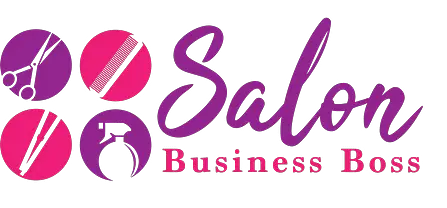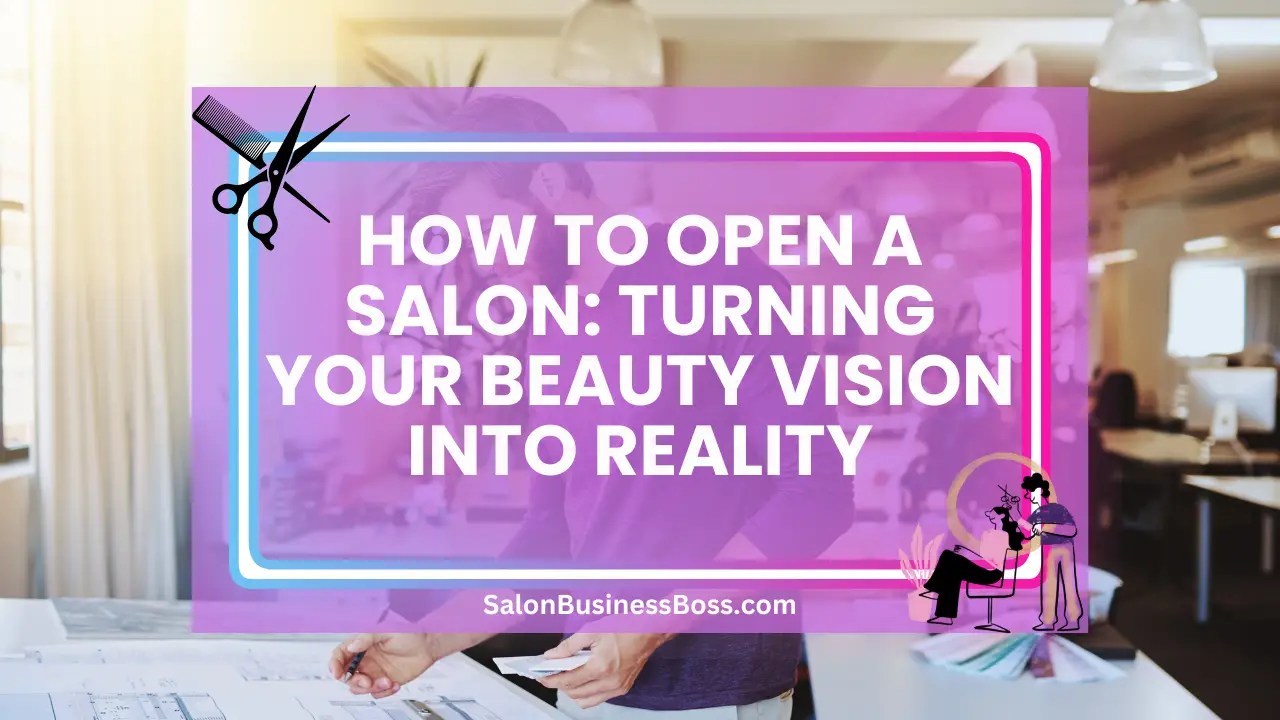Opening a salon can be a rewarding and fulfilling venture for those passionate about the beauty industry and eager to provide exceptional services to clients. Whether you aim to specialize in hair care, skincare, or nail services, launching a successful salon requires careful planning, dedication, and attention to detail.
To open a salon, conduct thorough market research, create a solid business plan, and choose a prime location. Obtain the necessary licenses, design an inviting space, and invest in quality equipment. Recruit a skilled team, develop a strong marketing strategy, and prioritize exceptional customer experience.
1. Research and Market Analysis
Before embarking on the exciting journey of opening a salon, conducting thorough research and market analysis is essential for setting the groundwork for success. By delving into the industry landscape, you gain valuable insights into current trends, demands, and potential challenges. Understanding your target market is crucial, and studying local demographics will help you tailor your salon’s services to meet specific needs.
Competitor analysis is equally critical to identify gaps in the market and areas where you can shine. Analyzing rival salon offerings allows you to position your business strategically, offering unique selling propositions that set you apart from the competition. Moreover, exploring consumer preferences enables you to gauge which services are in high demand and what pricing strategies will resonate with your potential clients.
The data collected from research and analysis will shape your business strategy, guiding decisions on the range of services to offer, pricing structure, and marketing efforts. Armed with this knowledge, you’ll be better equipped to enter the market with confidence, knowing you’ve tailored your salon to meet the demands of your target audience.
2. Create a Solid Business Plan
Crafting a comprehensive business plan lays the foundation for your salon’s future success. It is a roadmap that outlines your salon’s mission, vision, and core values, providing direction for every aspect of your venture. Defining clear business objectives and setting achievable milestones helps you stay focused on your goals and measure your progress.
A crucial component of the business plan is the financial section, which outlines the financial aspects of your salon. It includes startup costs, projected ongoing expenses, and revenue forecasts. Conducting a break-even analysis helps you determine the point at which your salon’s revenue covers its expenses, enabling better financial planning.
Your business plan should also encompass marketing strategies to promote your salon and attract customers. Consider various marketing channels, such as social media, local advertising, and promotions, to reach your target audience effectively.
Your plan should outline staffing requirements, including the number of employees needed and their roles. Defining growth plans for the future will help you visualize the expansion of your salon and set long-term objectives.
3. Choose the Right Location
Selecting the perfect location for your salon is a critical decision that can significantly impact its success. A high-traffic area ensures visibility and exposure to potential clients, increasing the likelihood of attracting a steady flow of customers. Consider areas with heavy foot traffic, such as shopping malls, busy streets, or commercial centers, as they provide excellent opportunities for attracting walk-in clients.
Understanding your target market is essential when choosing a location. Analyze local demographics to ensure the area aligns with the preferences and needs of your potential clientele. For instance, if your salon specializes in luxury services, a location in an upscale neighborhood might be more suitable.
The ambiance you envision for your salon should also align with the chosen location. A tranquil and upscale neighborhood may complement a high-end spa, while a lively and trendy area may suit a modern and vibrant salon.
Before finalizing a location, verify that it complies with local zoning regulations. Ensure that the space is zoned for salon or commercial use and that there are no restrictions on specific services you plan to offer.
4. Legal and Licensing Requirements

Understanding and fulfilling legal and licensing requirements is fundamental to operating a salon legally and professionally. Registering your salon as a legal entity, such as a sole proprietorship or limited liability company (LLC), provides liability protection and formalizes your business structure.
Obtain all the necessary licenses and permits required to operate a salon in your locality. These may include general business licenses, health and safety permits, and cosmetology certifications for you and your staff. Compliance with health and safety regulations ensures a safe environment for clients and employees, fostering trust and credibility.
Consult with a legal professional or relevant authorities to ensure you meet all the legal requirements specific to your area. Staying informed about local laws and regulations will help you avoid potential legal issues and ensure a smooth and lawful operation of your salon.
Read more about: Main Differences Between Hair and Beauty Salons
5. Salon Design and Layout
The design and layout of your salon play a crucial role in creating a welcoming and memorable experience for your clients. An inviting and aesthetically pleasing ambiance sets the tone for your salon and leaves a lasting impression. Consider seeking the expertise of a professional interior designer who can optimize the space and create a layout that flows seamlessly.
Create distinct and well-defined areas for different services, such as hair, skincare, and nails. This segregation enhances the efficiency of your salon operations and provides clients with a sense of privacy during their treatments.
Invest in comfortable and functional salon furniture, such as ergonomic hairstyling chairs and plush waiting area seating. Quality furniture not only enhances the comfort of your clients but also reflects the professionalism and attention to detail of your salon.
Thoughtful lighting choices can significantly impact the overall ambiance. Use a combination of natural light and carefully selected artificial lighting to create a warm and welcoming atmosphere. Consider incorporating mirrors strategically to provide a sense of spaciousness and allow clients to appreciate the results of their treatments.
Ensure that the color scheme and décor align with your salon’s branding and target audience. If your salon aims to exude a modern and trendy vibe, choose contemporary and chic furnishings. For a more classic and elegant atmosphere, opt for timeless and sophisticated décor elements.
6. Procure Quality Equipment and Products
Investing in high-quality salon equipment and beauty products is essential to provide top-notch services and enhance the overall customer experience. Professional-grade equipment not only ensures the effectiveness of your treatments but also demonstrates your commitment to delivering exceptional results.
Consider purchasing premium hairstyling chairs that provide both comfort and functionality. Ergonomic chairs minimize strain on both the client and stylist during long sessions, promoting a positive experience for everyone.
Quality hairdryers and shampoo stations are essential tools for delivering outstanding hair services. Invest in equipment that offers different settings to cater to various hair types and styles, ensuring versatility and satisfaction for your clients.
For skincare services, procure reliable skincare equipment that meets industry standards. High-quality facial machines and other skincare devices enhance the effectiveness of treatments and leave clients feeling rejuvenated and satisfied.
Collaborate with reputable beauty product suppliers to source top-notch products that cater to different skin and hair types. Offering a diverse range of products allows you to tailor treatments to individual needs, providing personalized and effective solutions for your clients.
By investing in quality equipment and products, you demonstrate your commitment to excellence and build trust with your clients. The assurance of receiving premium services and using reputable beauty products will encourage repeat visits and positive word-of-mouth referrals, helping your salon thrive in the competitive beauty industry.
7. Build a Talented Team
Assembling a talented and dedicated team is a critical factor in the success and reputation of your salon. Seek licensed and experienced professionals who possess a passion for the beauty industry and share your salon’s values. Look for individuals with exceptional skills and a track record of delivering high-quality services.
Conduct thorough interviews to get to know potential team members and assess their suitability for your salon’s culture. In addition to evaluating technical expertise, consider factors such as communication skills, professionalism, and the ability to work harmoniously in a team environment. Conduct skill assessments, especially for services that require specialized expertise, to ensure your team can deliver outstanding treatments.
Nurturing a positive work environment is crucial to maintaining employee satisfaction and motivation. Offer opportunities for professional development and growth, such as workshops and training programs. Recognize and reward outstanding performance to foster a sense of appreciation and loyalty among your team.
Remember that your team represents your salon, so their commitment to customer satisfaction is paramount. With a talented and passionate team, you can build a reputation for excellence and create a loyal customer base that trusts in your salon’s services.
8. Develop a Strong Marketing Strategy

In the competitive beauty industry, a robust marketing strategy is essential to attract and retain clients. Embrace a multi-faceted approach that combines both online and offline channels to maximize your reach and visibility.
Harness the power of social media platforms to engage with potential clients and showcase your salon’s expertise. Regularly post high-quality content, such as before-and-after photos, service highlights, and customer testimonials, to create a captivating online presence.
A professional website serves as your salon’s digital storefront. Ensure it is user-friendly, visually appealing, and provides essential information about your services, team, and contact details. Implement search engine optimization (SEO) techniques to improve your website’s visibility on search engines, driving organic traffic to your site.
Email marketing is an effective way to communicate with existing and potential clients. Send out newsletters, exclusive offers, and updates about your salon to keep clients engaged and informed.
Offer promotional packages, loyalty programs, and referral incentives to encourage repeat business and word-of-mouth marketing. Satisfied clients are more likely to recommend your salon to their friends and family, generating valuable referrals.
Monitor the success of your marketing efforts through analytics and customer feedback. Adapt your strategies based on data insights to continuously improve your marketing performance and cater to evolving customer needs.
By developing a strong marketing strategy, you position your salon as a go-to destination for beauty services and ensure a steady stream of clients, propelling your salon towards sustainable growth and success.
Read more about: Empowering Your Brand: Haircare Product Marketing
9. Deliver Outstanding Customer Experience
In the salon business, prioritizing customer experience is not just a goal; it is a fundamental requirement for success. Exceptional customer service leaves a lasting impression on clients and fosters loyalty, leading to repeat business and positive word-of-mouth referrals. To achieve this, it is vital to train your staff to provide personalized attention and deliver outstanding customer service.
Your team should be attentive, approachable, and knowledgeable about the services your salon offers. They should be adept at understanding and addressing each client’s unique needs, preferences, and concerns. A warm and friendly demeanor combined with professionalism and expertise creates a comfortable and inviting atmosphere, encouraging clients to return and recommend your salon to others.
Implementing appointment scheduling systems is another key aspect of optimizing the customer experience. Minimizing waiting times demonstrates respect for your clients’ busy schedules and shows that you value their time. Whether through phone or online booking platforms, a well-organized scheduling system ensures efficient salon operations and streamlines the customer journey.
Actively encouraging client feedback is crucial for gauging satisfaction and identifying areas for improvement. Create open channels for clients to share their experiences, whether through in-salon feedback forms, online reviews, or social media interactions. Analyze this feedback to gain insights into what clients appreciate about your services and what areas may need enhancement. Address any concerns or issues promptly, showing your dedication to providing the best possible customer experience.
Conclusion
Opening a salon can be a fulfilling journey for aspiring entrepreneurs in the beauty industry. With thorough research, a solid business plan, the right location, legal compliance, appealing salon design, quality equipment, a talented team, effective marketing, and a focus on customer experience, you can set your salon up for success. Embrace your passion, remain adaptable to changing trends, and stay committed to delivering top-notch services to make your salon a preferred destination for beauty enthusiasts.
Frequently Asked Questions

1. What equipment and products do I need for my salon?
Invest in high-quality salon equipment, such as hairstyling chairs, hairdryers, skincare equipment, and nail stations. Collaborate with reputable beauty product suppliers for quality products.
2. How do I recruit a skilled team for my salon?
Conduct thorough interviews and skill assessments to find licensed and experienced professionals who align with your salon’s values and passion for the beauty industry.
3. What marketing strategies should I use to promote my salon?
Develop a comprehensive marketing strategy that includes online and offline channels. Utilize social media, a professional website, email marketing, and offer promotions and loyalty programs.
To learn more on how to start you own salon checkout my startup documents here.
Please note that the contents of this blog are for informational and entertainment purposes only and should not be construed as legal advice. Any action taken based on the information provided in this blog is solely at your own risk. Additionally, all images used in this blog are generated under the CC0 license of Creative Commons, which means they are free to use for any purpose without attribution.

About the author. Entrepreneur and Salon Business Fan.
Hi! I am Shawn and I am a happy individual who happens to be an entrepreneur. I have owned several types of businesses in my life from a coffee shop to an import and export business to an online review business plus a few more and now I create online salon business resources for those interested in starting new ventures. It’s demanding work but I love it. I do it for those passionate about their business and their goals. That’s why when I meet a salon business owner, I see myself. I know how hard the struggle is to retain clients, find good employees and keep the business growing all while trying to stay competitive.
That’s why I created Salon Business Boss: I want to help salon business owners like you build a thriving business that brings you endless joy and supports your ideal lifestyle.

